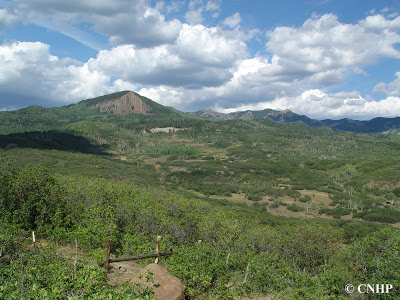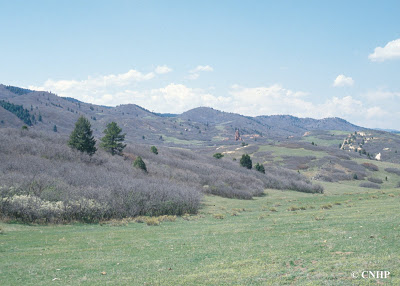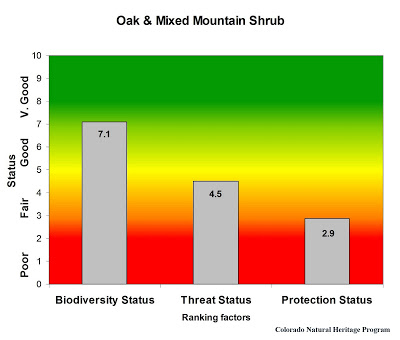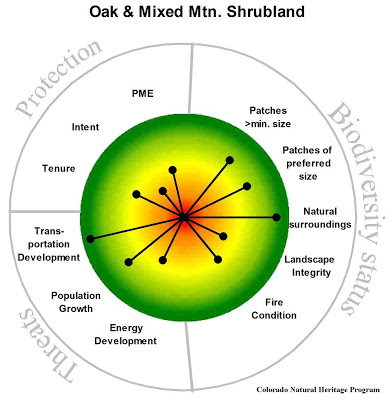
These are montane shrublands generally occurring at elevations from approximately 6,500 to 9,500 feet, where they are often situated above pinyon-juniper woodlands. Gambel oak is typically dominant, but very often mixed with other montane shrubs such as serviceberry, mountain mahogany, antelope bitterbrush, big sagebrush, chokecherry, and snowberry. This ecological system intergrades with the foothills shrubland system and shares many of the same site characteristics. In Colorado, oak and mixed mountain shrublands are most common on the west slope, where they form extensive bands on the lower mountain slopes, plateaus, and dry foothills. In eastern Colorado these shrublands are also found at the mountain front as far north as the Palmer Divide. These shrublands may form dense thickets, or occur as open shrublands with an herbaceous understory. Although this is a shrub-dominated system, some trees may be present. Fire typically plays an important role in this system, causing shrub die-back in some areas, promoting stump sprouting of the shrubs in other areas, and controlling the invasion of trees into the shrubland system.

As with foothills shrublands, there are few common or rare species exclusively associated with oak-mixed mountain shrublands. A variety of small mammals, including squirrels and woodrats, and birds such as rufous-sided towhee, green-tailed towhee, and Virginia’s warbler use these habitats. Larger mammals such as mule deer, black bear, and mountain lion may take advantage of the cover and food sources offered by thick shrublands.
These shrublands account for about 2.7 million acres in Colorado, more than 50% of it on privately owned land. Other substantial tracts are on state and federally owned lands, especially those managed by the US Forest Service and Bureau of Land Management, and occasionally within non-wilderness protected areas. These shrublands are weakly protected in Colorado, but are generally in good condition. Impacts include housing development and oil and gas development.
 |
| Overall biodiversity, threat, and protection status scores for oak shrublands in Colorado. |
 |
| A “windrose” graph depicting oak shrubland status for individual scoring factors. |




